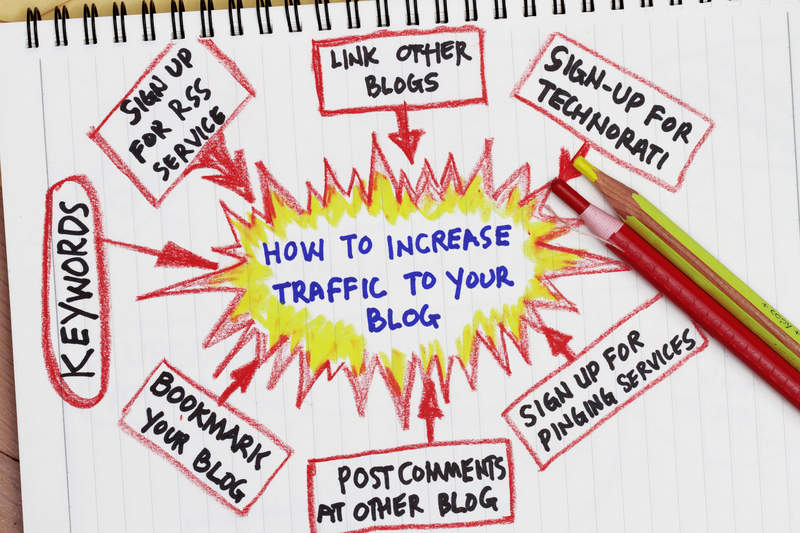People are nothing if not predictable. Let me give you an example: If you say to someone, “You’ve got a great job.” They will invariably tell you why it’s NOT great. But if you say to them, “You’ve got a lousy job.” They’ll tell you why it’s actually a very good job.

Knowing the triggers you can use to activate certain behaviors in prospects can help tremendously to increase your conversions and your bottom line.
That’s why I’ve compiled 10 slightly sneaky methods to get your audience to do your bidding – or stated another way, here are 10 methods to get the public to buy your product and share your message with the world.
People crave entertainment like they crave air, and they always need more of it. A good analogy is caffeine – in the beginning, the smallest amount of caffeine can give you a nice little buzz. But the more caffeine you use, the more you need to achieve that same buzz level.
Entertainment is no different. The movies of the 40’s weren’t fast paced enough for people of the 60’s. The music of the seventies can’t compete with the music of the 80’s. The comedy of the 90’s seems tame compared to the comedy of now. Why is that? Because entertainment is constantly having to turn up the intensity to get the same reactions from the audience. People want more and more exciting stuff, and if you can build excitement and entertainment right into your product, you’ve got a hit.
Speaking of entertainment, people LOVE controversy. Build a controversial website, blog, forum, product line, podcast, YouTube channel, etc. and watch people flock to it. You’ll get free publicity everywhere as people either promote you or flog you in social media, forums and other blogs across the net.
And as a marketer, you could capitalize on both sides at the same time if you wanted to be sneaky about it. For example, you might build two websites – one on each far, far end of the political spectrum – and let them slug it out online. Anything that has what is perceived to be a polar opposite could work, such as God-fearing vs Atheist, protecting wildlife from loggers and miners, etc.
Or build controversy into your product from the start. “How To Use Tax Loopholes So You Don’t Pay Your Fair Share Of Taxes.” Is it legal? Yes. Is it fair? No. Or how about toy guns for children? Some parents love them, many hate them, and all will have something to say about it which drives more traffic to you.
This one’s really sneaky – carry on a conversation between two people about how great a product is. This could be in a forum, posts on a blog, or even if it were to “come up” during an interview about something else. The point of course is to not appear as though it’s a promotion. Yeah, I know; pretty sneaky.
People like to follow, as in “follow the leader.” What happens when one cow walks away from the herd? If the other cows suspect this cow knows something they don’t, they’ll follow. It doesn’t matter WHAT this cow might know, only that they have information that might be of use. Is the grass greener over there? Is there a secret stash of alfalfa or a salt lick over there? Let’s follow her and see!
It might seem callous to compare people to cows, but the herd mentality applies to many species including people. If someone is seen as a leader and that leader uses ABC product, then it’s going to be easy to get the followers to use ABC product as well.
As a marketer, you can use this in one of two ways – either become a leader yourself, or get your product into the hands of leaders and make sure people find out about it.
Speaking of following, people follow the confident person. They’re attracted to confidence like bees to honey. If you don’t have confidence, get it. Depending on your niche, arrogance might work as well.
Take it away. Whatever your product is, find a way to take it away from the potential buyer. Maybe they have to qualify and not everyone can. Or there’s a limited number. Or the offer is ending soon. Or maybe they’re just plain NOT supposed to have it, so you tell them NOT to buy the book but you drop hints of just how powerful it is.
People do not like to be left out. This works well in the Internet Marketing niche and it works even better in any non-marketing savvy niche.
People work harder to get something for nothing. Weird but true. What else explains someone who masters a gambling system or studies race horses just to bet? If your product promises huge returns for small effort, it will sell. Unfortunately, most products like this can’t deliver. But you can use the something-for-nothing technique in a way that is totally ethical – referrals. That is, get people to promote you through social media in exchange for something free.
Another way to ethically use something-for-nothing is to make it appear as though the very act of purchasing your product is a giant leap towards attaining their goal. You’re being honest that there is work involved, but you make the first step seem so enticing they feel they’ve practically achieved their dream simply by buying the product.
People get seduced by stories. BIG TIME. Think of the man sitting cross-legged, playing a flute while a cobra sways hypnotically to the music. This can be you hypnotizing your audience through storytelling, both written and verbal.
Entire courses have been written about using storytelling in marketing. A good story creates thoughts and images in your prospect’s head that seem to originate from the prospect, not from you. And a really great story causes the audience to feel emotions and desires that come from these thoughts and images. Bottom line, get good at storytelling and then use your skill to weave mesmerizing stories throughout your marketing.
People buy dreams, not just once, but over and over again. Why is it a camper will buy every camping gadget out there? Why will a golfer purchase every golfing book written in the past 20 years? Why do Internet marketers buy online marketing products sometimes at the rate of 3 and 4 a day?
This is why a list of actual buyers is so hot – if these people bought once, they will very likely buy again and again. You can continue to create products and promote products to this list and as long as their dream remains alive, they will continue to buy. Perhaps it’s the act of purchasing that makes them feel they are one step closer to realizing their dream. Thus 5 purchases puts them 5 steps closer, and 10 purchases put them…
You can get sneaky with this one as well. Create several somewhat similar products and then let them compete with each other. It can be surprising how many customers purchase two or more.
People actually WANT to believe. So make it real. Make it believable. Help them along. Show some negative with the positive. Did you know that testimonials are far more effective if they mention something NEGATIVE? For example: “I wasn’t crazy about the title of this course and thought it was going to be just a rehash, but it turns out it was exactly what I needed. Using this information I’ve been able to ___ and ___ and achieve ___.” Make it believable.
And remember, please use these methods only for good and never for evil.






















